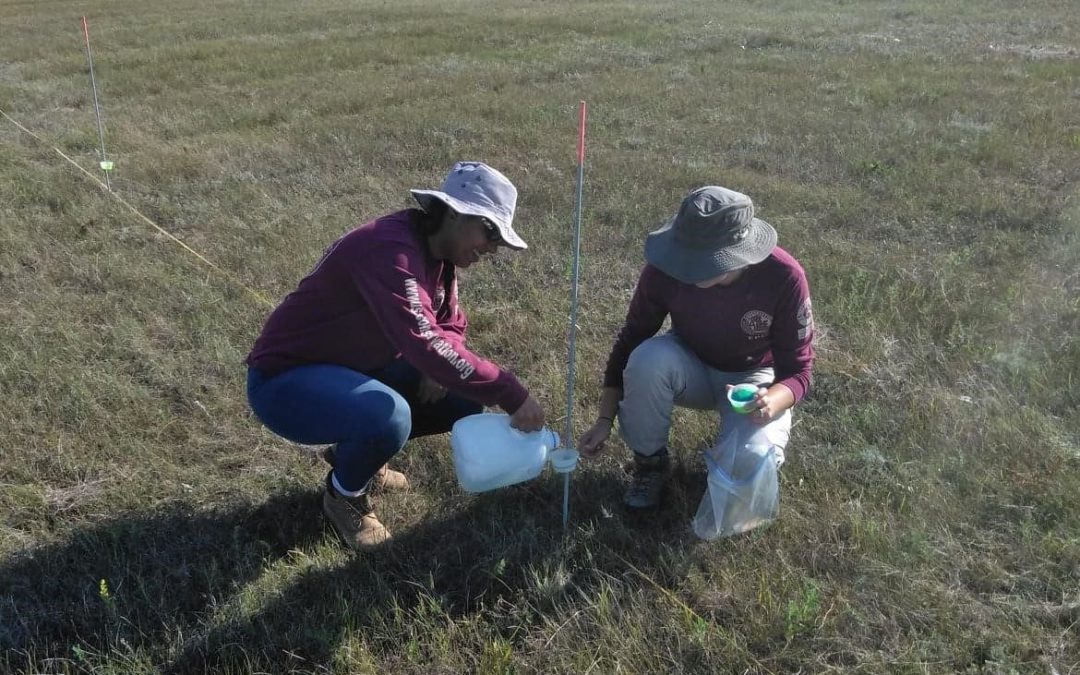A Day in the Life
By: Michelle Ferguson and Angelica Varela
Welcome back readers! Halfway through our internship, we are now welcoming our first round of repeat refuges. We’re looking forward to reconnecting with staff and seeing familiar refuges in a different season. Our most recent refuges included a second visit at both Sullys Hill National Game Preserve in North Dakota and Balcones Canyonlands NWR in Texas. We also sampled at Canaan Valley NWR in West Virginia.
One of the most common questions we get along our journey is, “What do you actually do as visitor survey interns?” Join us on a typical day in the life of a budding social scientist on the National Visitor Survey ACE-EPIC project.
At each refuge we visit, we first meet with refuge staff to help orient ourselves to the refuge. The staff helps us scope out sampling locations, where we will station ourselves to intercept visitors and ask for their participation in a survey about their trip to the refuge. During orientation we often get to see parts of the refuge that aren’t accessible to the public. At Sullys Hill, we drove around the gated refuge perimeter on an ATV, getting our own private view of the wildlife and landscape. Our favorite part of the planning process is finding a day to hike refuge trails to better connect with the visitor experience. This is normally when we decide to become photographers, snapping pictures for later use.
Each refuge and its visitors are unique and it is our job to be flexible in our communication strategies. Sometimes a more direct method works and other times a casual approach is better received. In a typical shift, we strategize the most efficient way to find and contact visitors at certain times and locations. For instance, towards the end of our stay in Texas, hunters at the annual refuge dove hunt became the hunted as we tracked down the camo-clad visitors preparing for their hunts. We also adapt quickly to learning the local lingo. Most recently we learned that when you’re in West Virginia, if a visitor says they’re from “Washington,” it refers to Washington, D.C., not the state in the Pacific Northwest.
Of course we’ve had our fair share of unexpected weather and unforeseen factors, always keeping us on our toes navigating throughout any given day. At Sullys Hill we acquired the unexpected skill of strategically maneuvering around large ungulates who took over our sampling site (see below).
A large part of our job is interacting with the public. We are lucky to have the opportunity to travel all over the U.S. and meet individuals from all walks of life. Most of this includes visitors we encounter during our sampling shifts. At Sullys Hill, we met a visitor who fondly recalled volunteering for the refuge as a youngster and now brings his own children to see the bison. We also meet visitors with a fierce passion for the local area. Many enjoy sharing their knowledge of the geography and fun spots in the area with us. One of our favorite treasures was getting to know the gem that is Thomas, a charming small mountain town hidden in the pine trees of West Virginia, full of wild blueberries and fawns. After several locals exclaimed that we must go to The Purple Fiddle while in town we decided to check it out. To our pleasant surprise we enjoyed a groovy night of brass funk jams at this local music venue.
We are empowered by the visitors who’ve vocalized their appreciation for the visitor survey project, grateful that these landscapes continue to exist. Recently at Balcones Canyonlands NWR, we gushed over a couple who got engaged 2 years ago that very same evening at the Warbler Vista Sunset Deck on the refuge. These refuges represent a strong emotional connection to many visitors, and it’s humbling to share that experience.

Michelle sampling visitors driving through the wildlife auto tour at Sullys Hill national Game Preserve. August 2018. Photo by Angelica Varela.

Visitors at the dover hunt in Balcones Canyonlands NWR examine a map of the area to choose the best hunting spot. August 2018. Photo by Michelle Ferguson.
Along with our National Visitor Survey efforts, a part of our job is engaging directly with refuges on projects where they need an extra pair of hands. After we wrap up sampling, we’ve enjoyed giving our time to help out with sidework ranging from biology projects to trash clean up. In Canaan Valley, we traded in our surveying iPads for boots and trucked our way through muddy forest trails at midnight to look for the threatened Cheat Mountain salamander and record any other species in the area. At Sullys Hill NGP we assisted in a pollinator inventory and monitoring survey, becoming North Dakota butterfly masters.

Left: Baby Cheat Mountain salamander at Canaan Valley NWR, found during our night out on the conservation project. July 2018. Photo by Zach Dykema. Right: Angelica Varela assists salamander conservation project by setting up markers for the sampling area. July 2018. Photo by Michelle Ferguson.

Angelica Varela and Michelle Ferguson prepare bee bowls along a transect with The Habitat and Population Evaluation Team in North Dakota. August 2018. Photo by Simon Doneski.
From surveying, to connecting with visitors, and helping with extra projects, this is our experience in a day on the visitor survey team. It is a treat to work with the Refuge System through several avenues, always learning more about what it means to both the wildlife that depend on these ecosystems and the visitors who enjoy them.



